Wood tones are often problematic when you choose a colour scheme or new furnishings. Some people are willing to solve the problem by spending hours looking for furniture with the same wood tones. After all that work you may end up with a boring room where everything looks the same and blends into each other.
An easier and more exciting approach is to mix wood tones in your decor to provide a more layered, interesting room. You can mix tones with confidence it you stick to a few basic guidelines.
Use your floor as the constant
When choosing furniture you have to consider your floors if they are wood. They are the constant against which all other wood tones will be compared. If your floor has more that one colour you can safely choose any of those colours for other wooden furniture or accessories.Limit the number of tones
Choose one tone as the "star"
If you have various wood tones or are buying new furniture, choose one of the wood tones as the dominant one. Aim for uneven proportions. The room above is a very interesting balance of lights and darks. When the rug and chairs are included in the mix it's the cabinet that stands out the most. The dark floor is acting as a backdrop.
Separate problem tones with a rug
Sometimes you end up with all the same wood tones in a room and the only way to bring some variety is to separate the wood tones with an area rug so everything doesn't blend together. This also works when you have two different tones that don't work that well together. Separation breaks the comparison.
Balance wood tones throughout a space
A close viewing of this room shows light, medium and dark wood tones which have been connected by spreading them around the room. The dark table connects with the upholstery piece at the foot of the bed. The armoire, legs and mirror are mid to darkish and the floor is light providing good flow and contrast.
If you choose dark tones for bookshelves banking a fireplace you need to have other dark tones around the room, preferably on the opposite side to move your eye through the room.
Keep contrast controlled
Deep, dark, rich wood tones such as mahogany, cherry, and walnut will often go better with medium-toned woods than lighter ones. And likewise, lighter toned woods, such as pine and oak, will also go better with medium wood tones, rather than with dark. In other words, it is okay to use varying wood tones, but aim for a lower level of contrast. The room above has medium and dark wood tones.
Keep furniture the same tone
Houzz
All the wood tones in this furniture are medium but they do not match perfectly. When you keep your major furniture pieces in the same wood tone, you can bring in other tones through accessories. Wood frames, candlesticks, trays, sculpture, or vases are obvious choices.
Consider the colour temperature of woods
Photography: Brian Ricks
Every wood has a colour temperature that needs to be considered. Natural ash, birch and maple tend to be cooler while other woods like oak and pine tend to be very warm with undertones of orange or yellow as they age.
Some stained woods can show warm and cool tones at the same time. This is ideal because then you can mix and match the wood tones in the space. When I'm choosing flooring for a client I look for finishes that will allow me to mix both warm and cool tones.In the room above the floor actually has more warms than the shot displays.
Use paint /upholstery to mimic a particular wood tone
If you have one piece of furniutre that is a different wood tone, you can use paint, window treatments or upholstery to mimic the wood tone and spread the colour around the room. The blinds and cabinet work together.
Most of us have wood tones somewhere in our homes and any renovations usually bring this issue to the forefront. I would love to hear how you have dealt with the making wood tones work in your space.
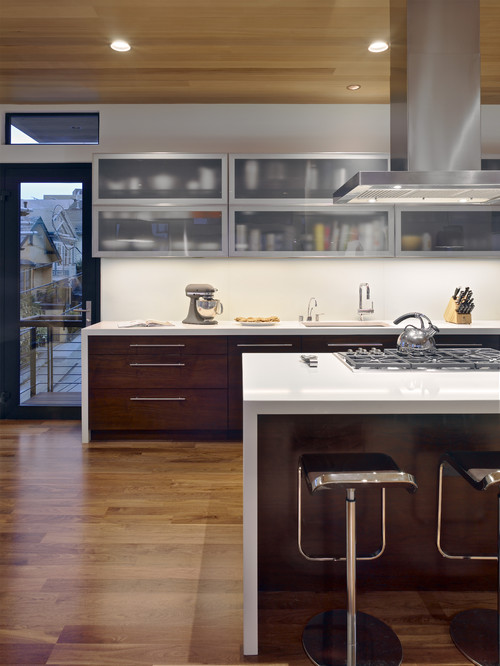
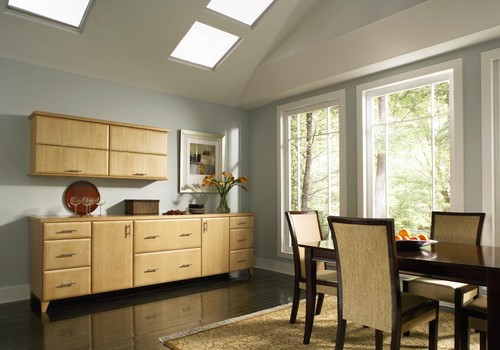
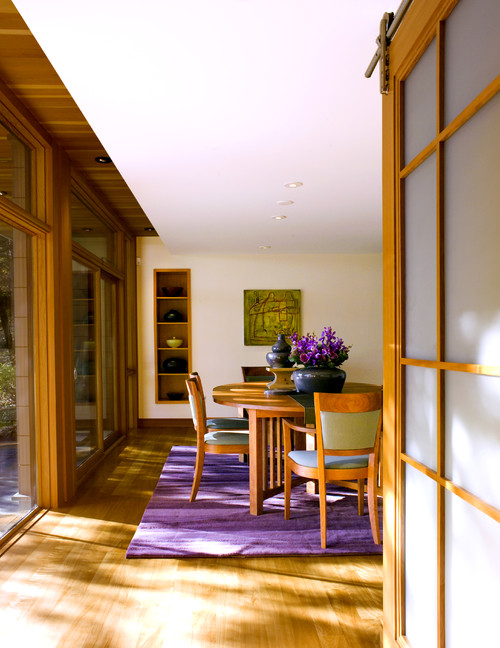
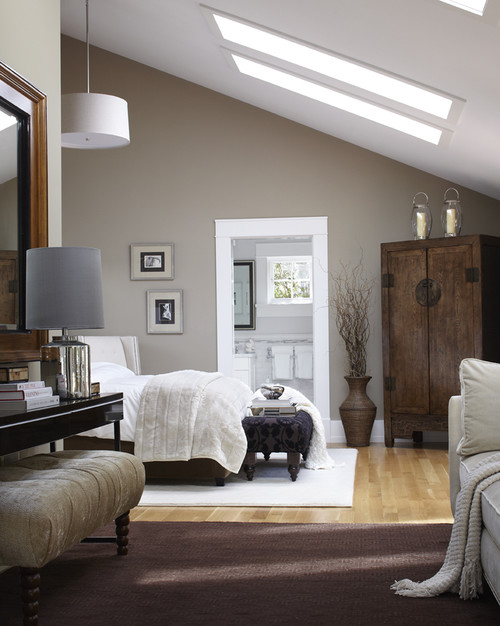
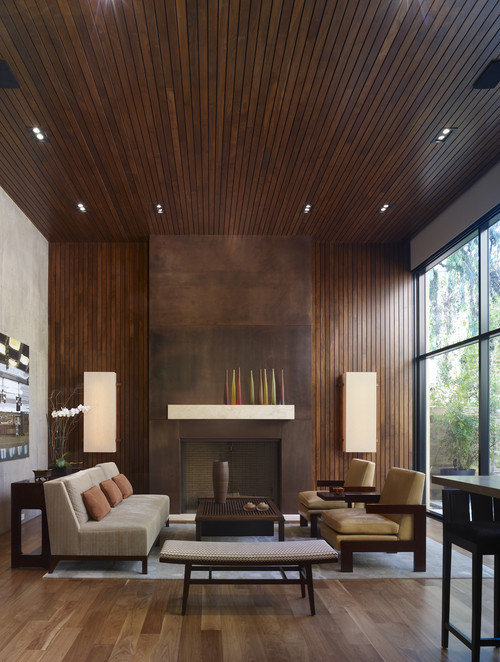
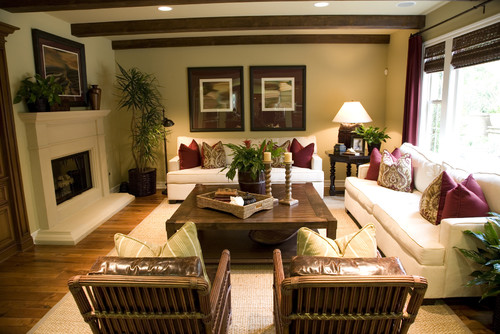

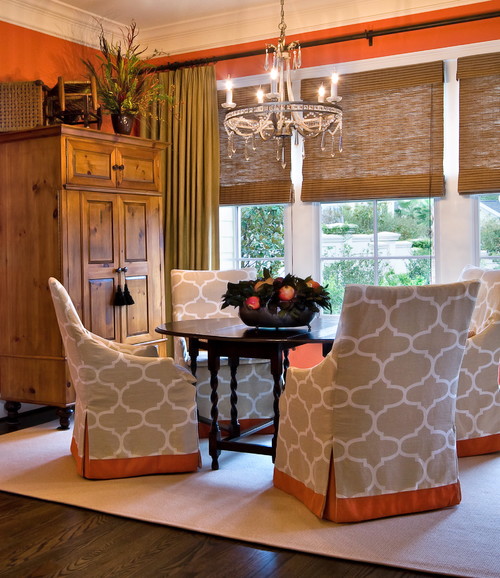
.jpg)
.jpg)







